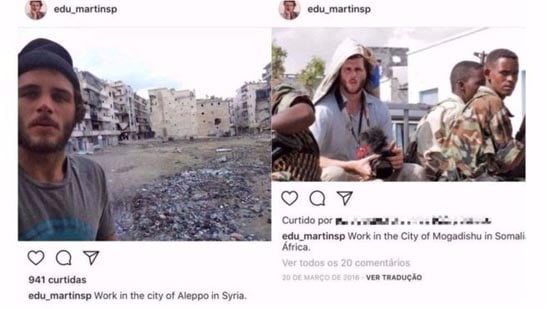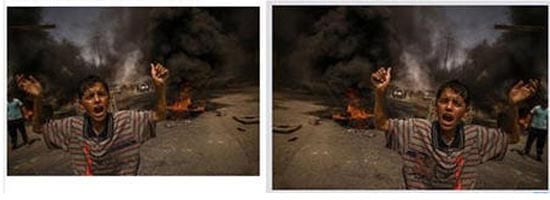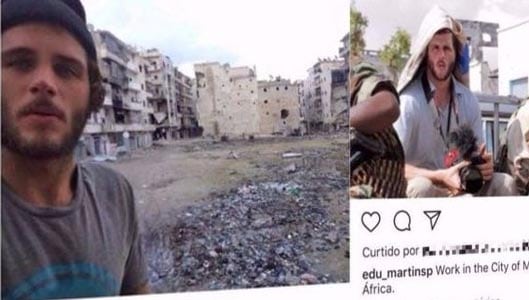The celebrated war photographer that fooled the Internet
The story of a man who fooled everyone, including The Wall Street Journal and The Telegraph. He fooled them all into believing he even existed.
Eduardo Martins story was a fascinating one. After beating child abuse and leukaemia when living in his native Brazil, he managed to turn his life around and landed a job that many photographers can only dream of – taking photos from around the world on behalf of the United Nations.
A self-professed conflict photographer, Martins would take photographs from areas ravaged by war, and sell those photos to high profile publications. The Wall Street Journal. The Telegraph. Getty Images. Le Monde. BBC Brasil.
His telling and powerful photos earned him a great reputation in his field. He gave interviews to various publications about what he did, and even planned on allowing the DOC Galeria to exhibit his work. Throughout his rising popularity, he managed to accumulate well over 100,000 Instagram followers.
Sponsored Content. Continued below...
Eduardo Martins was a true success story, and a sure star in the world of photography to watch out for.
Only he really wasn’t. He didn’t exist. His work, his job, his identity, his backstory, his photos, and most probably even his name. None of it was real.
As Martin’s popularity continued to grow, suspicions emerged. An investigation by BBC Brasil into Martin’s story soon uncovered one suspicious fact; no one had actually met Martins in person, and other conflict photographers had never heard of him.
It became apparent that Martins only contacted the publications he sold photos to through the Internet and WhatsApp, or through intermediaries who had also never met Martins in person.
Further investigation proved that Martins was indeed a fraud. The photos of himself in various conflict zones were fake – stolen from a British surfer called Max Hepworth-Povey – and digitally ‘photoshopped’ into photos of Iraq, Syria and Somalia.

Photos of Eduardo were actually of Maz Hepwroth-Povey
And the photos he sold to publications had been lifted from professional photographers including US photographer Daniel Britt. Martins had altered the photos slightly – such as mirroring them – so that reverse image software used to check for plagiarism wouldn’t detect the originals.

On the left a photo sent from Eduardo Martins, and on the right a photo taken by Daniel C. Britt.
And when the BBC contacted the United Nations who denied having any one working from them by that name, Eduardo Martins fake career as a conflict photographer came to an end.
Sponsored Content. Continued below...
So who was Eduardo Martins? Given that his photos, his work and is job were all fake, it is likely that his name is too. And it looks like we may never know. After being tipped off that reporters were growing suspicious of his credentials, one final WhatsApp message sent from Martins to another photographer working on behalf of the DOC Galeria read –
Hey bro. I’m in Australia. I made the decision of spending a year travelling around the world in a van. I will cut off everything, including the internet, and I deleted my IG [Instagram]. I want to be [left] in peace. We’ll speak again when I’m back. Hugs.”
And with that, his WhatsApp, Instagram and online presence disappeared, removed from the Internet, most likely forever. As various publications who had bought his work scurried to remove it, it’s just as if Eduardo Martins never existed. Which, of course, he hadn’t.
Continued below...
Thanks for reading, we hope this article helped, but before you leave us for greener pastures, please help us out.
We're hoping to be totally ad-free by 2025 - after all, no one likes online adverts, and all they do is get in the way and slow everything down. But of course we still have fees and costs to pay, so please, please consider becoming a Facebook supporter! It costs only 0.99p (~$1.30) a month (you can stop at any time) and ensures we can still keep posting Cybersecurity themed content to help keep our communities safe and scam-free. You can subscribe here
Remember, we're active on social media - so follow us on Facebook, Bluesky, Instagram and X
